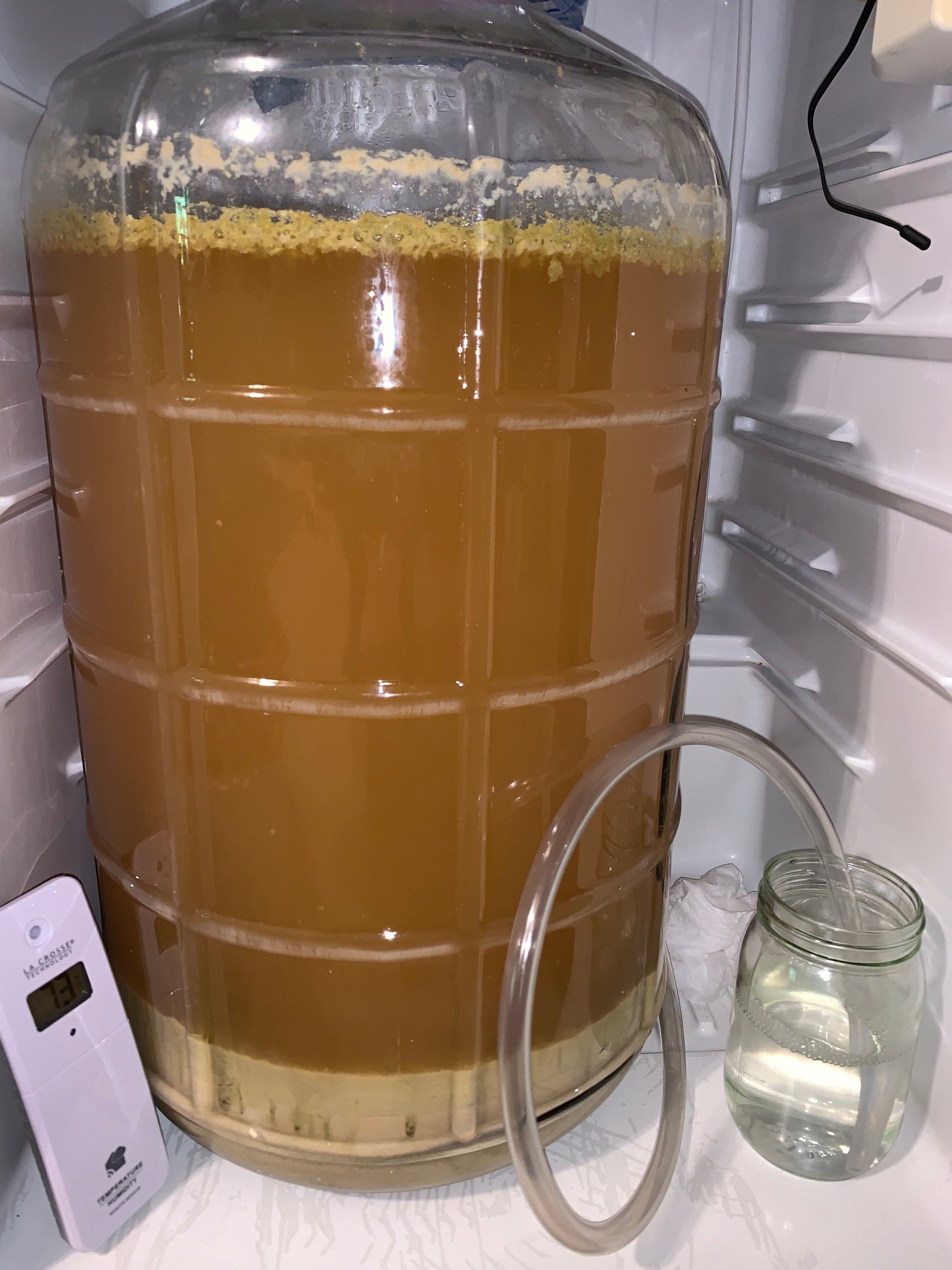jeffceo24
Active Member
- Joined
- Feb 5, 2018
- Messages
- 30
- Reaction score
- 2
I brewed an IPA (OG was 1.061-1.062) used Cellar Science Cali Dry Yeast and have been fermenting at 67 degrees in a mini fridge. Fermentation took off and was vigorous. I used a blow off tube because an airlock wont fit in the fridge, it was bubbling constantly for 2-3 days. Beer cleared up and seemed to finish activity after about 4 days or so.
I dry hopped 4 days ago with 2oz Simcoe and 1oz Citra. Yesterday was exactly 3 weeks in the fermenter. I started hearing the blow off tube bubbling and figured it was just co2 offgassing from introducing the hops. However, when I inspected the carboy, the beer appeared to be fermenting again. I was going to keg it today but now I am worried about diacetyl or off flavors if it is actually fermenting again. FYI there is a lot of traub from the kettle because my bazooka screen got messed up. Any suggestions?

I dry hopped 4 days ago with 2oz Simcoe and 1oz Citra. Yesterday was exactly 3 weeks in the fermenter. I started hearing the blow off tube bubbling and figured it was just co2 offgassing from introducing the hops. However, when I inspected the carboy, the beer appeared to be fermenting again. I was going to keg it today but now I am worried about diacetyl or off flavors if it is actually fermenting again. FYI there is a lot of traub from the kettle because my bazooka screen got messed up. Any suggestions?


